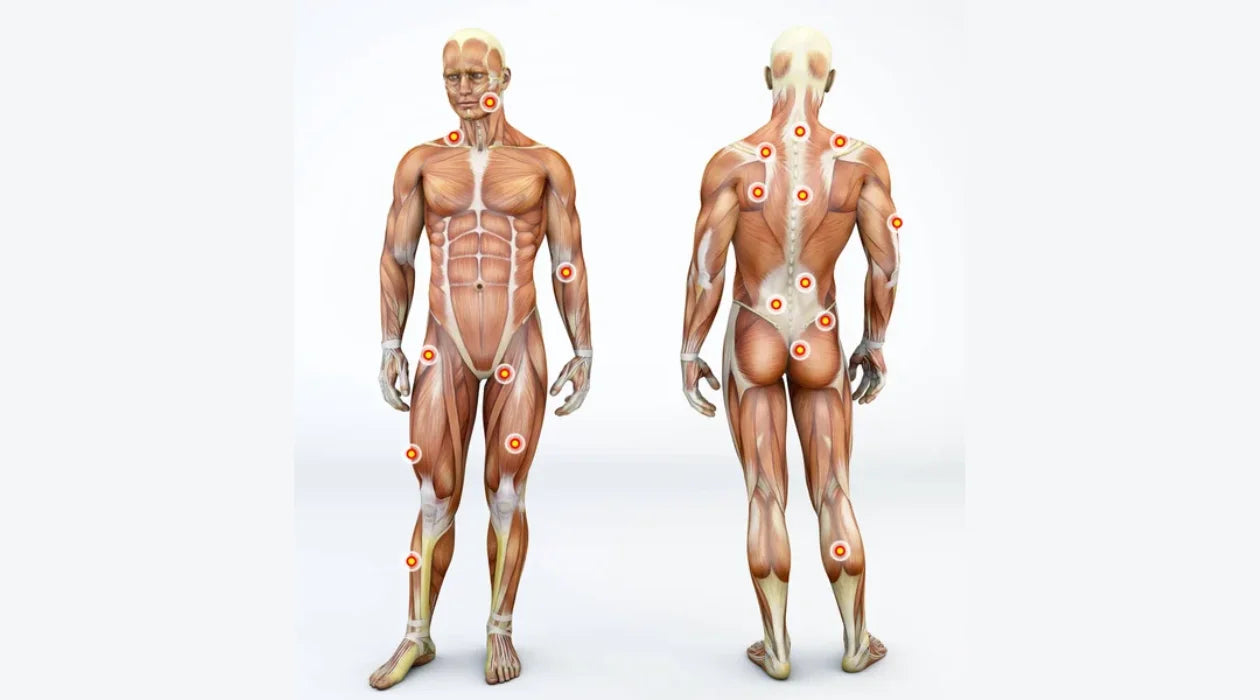In today's fast-paced world, where many people spend long hours sitting at a desk or staring at a screen, neck pain and headaches are becoming more common. The combination of pain and neck pain often disrupts daily activities and reduces quality of life. Whether you experience occasional discomfort or chronic pain, understanding the cause behind your symptoms is the first step to relieving them and improving your overall health.
Common Causes of Neck Pain
Understanding the various causes of neck pain can help in addressing the issue more effectively. Here are some of the most common reasons people experience neck pain:
- Muscle Strains. Muscle strains are a frequent cause of neck pain, often resulting from overuse or repetitive activities.
- Worn Joints. As we age, the joints in our neck, like those in other parts of our body, undergo wear and tear. This can lead to conditions such as osteoarthritis.
- Nerve Compression. Also known as a pinched nerve, occurs when herniated disks or bone spurs in the vertebrae press on the nerves branching out from the spinal cord. This can cause symptoms such as pain, numbness, or tingling that radiates from the neck to the arms.
- Injuries are another significant cause of neck pain. Whiplash, commonly resulting from rear-end auto collisions, occurs when the head is suddenly jerked backward and then forward, straining the soft tissues of the neck.
- Diseases. Certain diseases can cause or contribute to neck pain. Rheumatoid arthritis, for example, is an autoimmune disorder that leads to chronic inflammation of the joints, including those in the neck.

Common Causes of Headaches
Tension-Type Headaches
Tension-type headaches are one of the most common forms of headaches and are often described as a constant feeling of pressure or tightness around the head.
For example, high levels of stress can cause muscle tension, especially in the neck and scalp, which can lead to headaches.
Posture Sitting or standing can also cause headaches. For example, working at a computer or driving can cause muscle tension, which can lead to headaches.
People with tension-type headaches may be more sensitive to pain and muscle tenderness in the neck and scalp. These headaches can be episodic or chronic, severely interfering with daily activities and quality of life.
Migraine
Migraines are severe headaches that can last from hours to days and are often accompanied by other debilitating symptoms. Many people who suffer from migraines experience nausea and sometimes vomiting during an attack. Bright lights and noise can exacerbate migraine symptoms.
Common in women, hormonal changes (menstrual cycle) can trigger migraines. Migraines can be intense, usually affect one side of the head, and can severely disrupt normal activities.
Cluster Headaches
Cluster headaches are characterized by intense, recurring pain that usually affects one side of the head, often around the eyes. Its exact cause is not fully understood, but it is believed to be linked to the hypothalamus and may follow a seasonal pattern.

Secondary Headaches
Secondary headaches are caused by an underlying medical condition. These include sinus infections (characterized by pain and pressure in the forehead, cheeks, and around the eyes), spinal headaches, brain tumors, etc.
The link between neck pain and headaches is well established, with pain in one often exacerbating the other.
Treatment often involves addressing the underlying cause, whether that’s improving posture, managing stress, or treating a specific medical condition. By understanding this relationship, people can take proactive steps to relieve pain and improve quality of life.
Prevention and Management
Maintain Good Posture
When sitting, keep your shoulders back and your head aligned with your spine. This reduces stress on your neck and helps prevent pain. Regular physical activity and stretching are also essential to maintaining flexibility and strength in your neck muscles. Adjusting your workstation ergonomically can also make a big difference. Make sure your computer screen is at eye level and that your chair properly supports your lower back to minimize stress.
Related read: How to fix posture while sleeping?
Neck Massager
Incorporating a neck massager into your daily routine can go a long way toward providing pain relief. A quality neck massager like the one offered by SKG can help relieve muscle tension and improve circulation. Designed to target your neck and shoulder muscles, these devices provide a soothing massage that can reduce pain and stiffness. Regular use of a neck massager can complement your other preventative measures and enhance overall neck health and comfort.

Medical Intervention
When lifestyle changes alone aren’t enough, medical intervention is another option. Physical therapy can help strengthen neck muscles and improve posture. Medications like pain relievers and muscle relaxants can provide relief. For severe cases, injections or surgery may be necessary to effectively address the underlying issue.
Home Remedies
Home remedies can also be very effective in managing neck pain and headaches. Applying heat or ice to the affected area can reduce inflammation and pain. Gentle stretching and massage can relieve muscle tension and improve circulation. Over-the-counter pain relievers such as ibuprofen or acetaminophen can help manage pain.
FAQ
When Should I Worry About Right-Sided Head Pain?
You should seek immediate medical attention if your right-sided headache is severe, begins abruptly, or is described as the "worst headache of your life." Also, if the headache is accompanied by a painful red eye, high fever, stiff neck, or confusion, it could indicate a serious condition. Additionally, symptoms such as weakness, numbness, or vision changes, which are associated with a stroke, require urgent care. In such cases, go to your nearest emergency room or call 911.
Which Side of Neck Pain is Serious?
While temporary neck pain from everyday activities is common, severe or persistent neck pain, especially on the left side, may signal a more serious underlying condition. Chronic neck pain is one of the top five most common chronic pain conditions. If your neck pain is intense or lasts for an extended period, it’s important to consult a healthcare professional to rule out serious issues.
What Are The Red Flags for Neck Pain?
Red flags for neck pain include severe pain or headache described as the worst ever, double vision, difficulty swallowing, dizziness, sudden falls (drop attacks), facial numbness, difficulty walking, nausea, and involuntary eye movement (nystagmus). If you experience any of these symptoms, seek immediate emergency medical attention.
Conclusion
If you experience severe or persistent neck pain, especially after an injury, you should consult a doctor. Additionally, it is critical to seek medical attention if you experience accompanying symptoms such as fever, weakness, or numbness.




